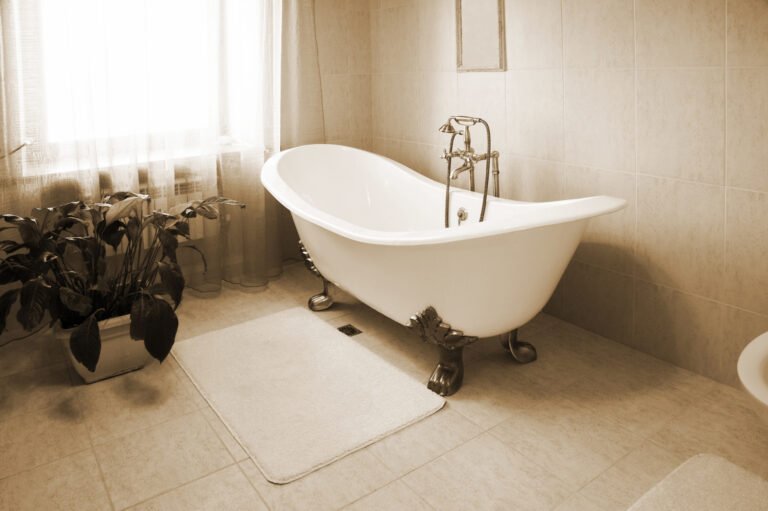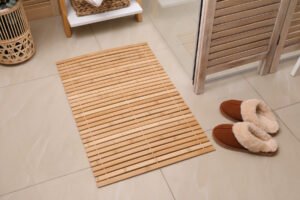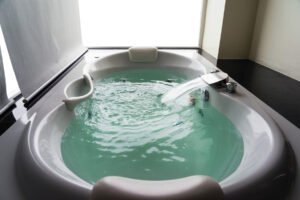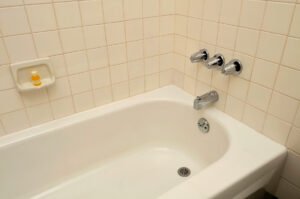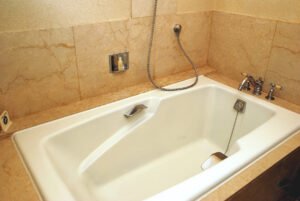Installing bathtubs is a tedious job. Apart from picking the right size, material, plumbing fixtures, and surface treatment for your tub, you’ll need to ensure that its plumbing adheres to your state’s uniform plumbing code. Most of these codes recommend the installation of a bathtub vent near the trap, but does it do more than ward off a fine?
Be it a bathtub, basin, or kitchen sink, plumbing vents allow super-fast drainage down the pipe and ensure adequate air circulation and ventilation in your piping. But does a bathtub need a vent, or can you use simple exhaust fans to ventilate your bathroom plumbing? Let’s find all the answers here.
Yes, every bathtub drain needs a plumbing vent to eliminate harmful sewer gases and excess moisture from the plumbing system. Moreover, the vent circulates fresh air within the pipe and prevents molds and other debris accumulations, ensuring smooth drainage and bathroom hygiene.
What Is a Plumbing Vent?
Plumbing vents are additional vertical pipes that draw air from the central roof vent and carry it downwards to the wastewater line. This fresh air eliminates the negative pressure in the fixture drain, pushes foul exhaust and harmful sewer gases out of the system, and helps maintain a clean, odor-free bathtub.
How Does Venting Work?
The drain pipe for most bathtubs connects to the trap, goes out to the wall, and discharges down into the main wastewater line. The plumbing vent pipe joins this junction from the top and pushes a gush of air down the pipe, forcing solid waste, sewer gases, and water down and preventing them from re-entering your bathroom. As a result, your pipes remain dry and odor-free.
Do All Bathtubs Need a Vent?
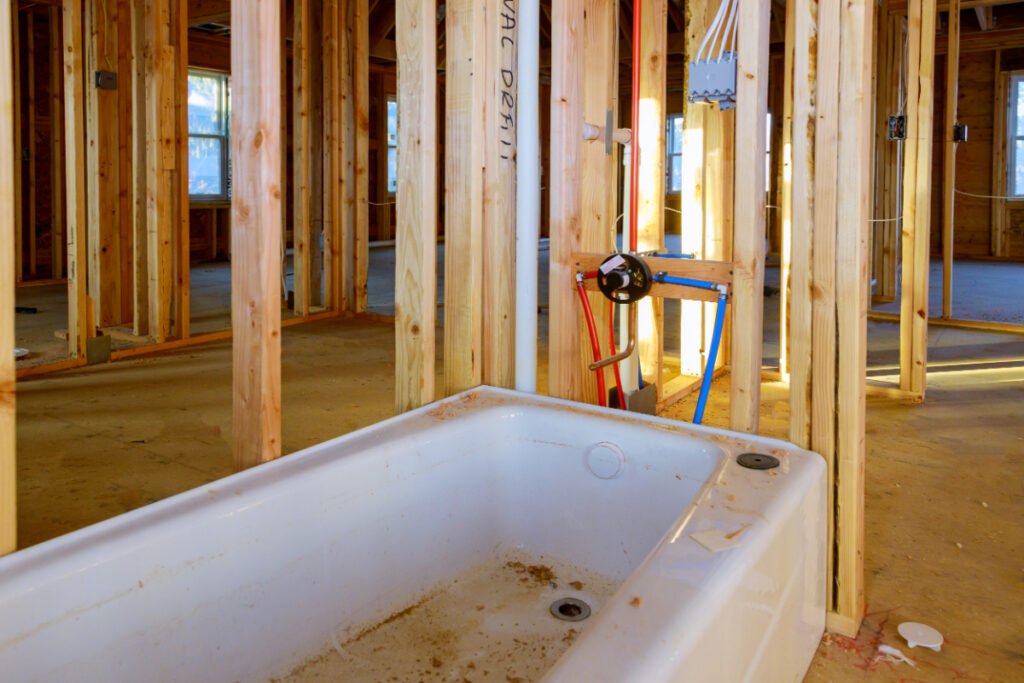
Yes, bathtubs need a vent pipe to maintain optimal drainage. Venting also helps eliminate plumbing issues like foul odors, clogging, exhaust and sewer gas leakage, and solid waste accumulation. Vents also comply with plumbing codes and boost your tub’s durability.
1. Does a Shower Tub Need a Shower Vent?
Yes, it would be best if you vented shower tubs with 1½ or 2-inch PVC pipes to prevent overflowing drains, trapped sewer gases, and other plumbing issues.
Join the vent about 5-inches from the trap, with a slope of ¼ inches per foot, for optimal drainage. Venting will maintain equilibrium in your pipes and ensure a smooth flow out of your showers.
You can add a separate free-standing vent from the attic to your shower tub if it’s farther than 8 feet from the central vent.
2. Does the Soaking Tub Need Vent Piping?
Soaking tubs are broad, deep, and hold a lot of water. Thus, they need a plumbing vent to ensure smooth drainage and prevent bubbles and gurgling sounds in the pipes. Moreover, vents ensure that the soaking tub drain remains dry and free of moisture after use and thus provide more durability in the long run.
You can use a dry vent for the bathtub drain of a soaking tub as it allows only gas and air to pass through it and dries more quickly.
3. Should You Add a Vent to Your Jetted Bathtub?
Jetted bathtubs add jets of air and water to the bathtub surface, and thus, they need a vent to prevent bubbles and gurgling sounds as the water drains into the wastewater pipe.
An unvented jet tub might drain too slowly, accumulating solid waste and clogging the bathtub drain and even the jets. So, it would be best to vent your jetted bath.
You can use cheater vents to vent your free-standing jetted bathtubs with inlets from the nearby bedrooms, balconies, or decks.
Advantages of Bathtubs with a Vent
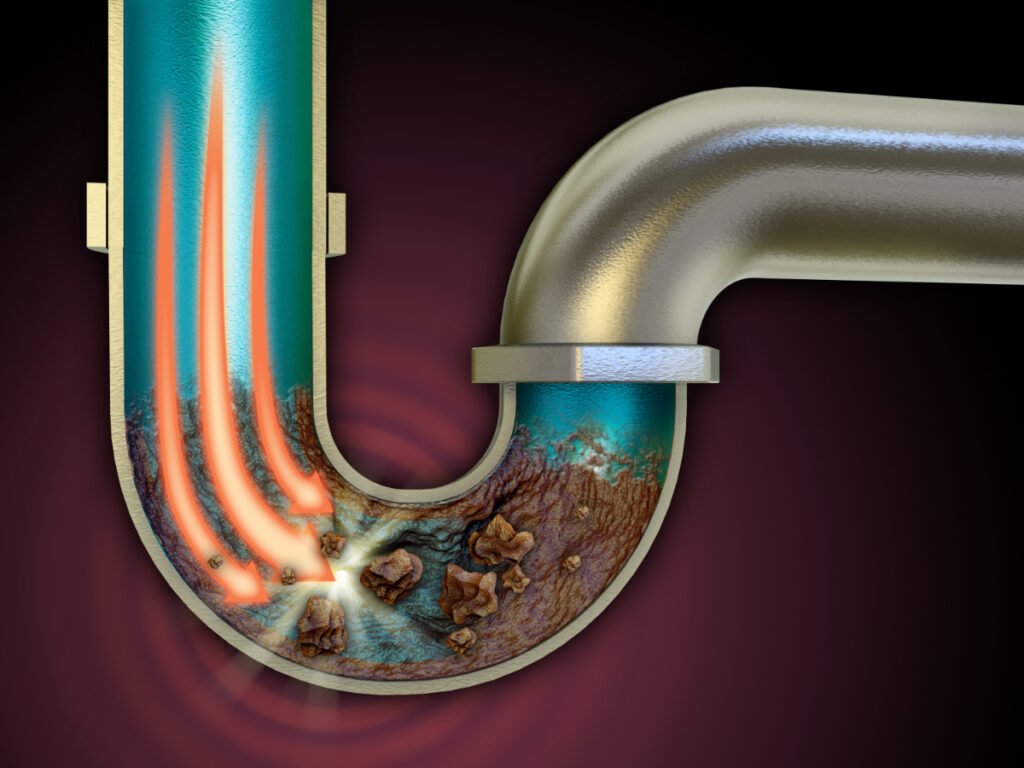
- Assures Smooth Drainage: A vent pipe forces fresh air down the main drain pipe and removes any solid waste accumulations or blockages. Thus, it regulates the sewage flow and ensures smooth, noise, and bubble-free drainage.
- Prevents Trapping of Gases: A vent pipe pushes trapped exhaust and sewage gases down the drain pipe and, thus, prevents them from reentering your plumbing system.
- Eliminates Molds and Fungi: Venting removes all the water and other leakages from the pipes and keeps them dry and fresh. Further, vents reduce the overall moisture in the piping and keep molds, mildew, and fungi at bay.
- Gets Rid of the Exhaust: Venting removes foul smells and harmful sewer gases from the drain pipe, preventing hazardous respiratory diseases, nausea, and choking.
- Prevents Water-logging: Vents break down the water stagnation in drain pipes and ensure free water flows down the bathtub or shower drain.
- Makes Pipes Durable: Vents keep pipes dry and free from rust, corrosion, or other chemical reactions. Thus, they increase the pipe’s lifespan and save additional costs on pipe repair, replacement, and maintenance.
- Saves Fine: U.S plumbing codes mandate vent installation and authorities could fine you if you do not vent your bathtubs.
What Happens If You Don’t Vent a Bathtub?
Vents are crucial for any bathtub to prevent problems like slow drainage, insufficient bathroom ventilation, and clogging. So, let’s list some issues with ventless bathtubs and look at how a vent can prevent them.
- Bubbles & Effervescence in the Pipes: Water won’t discharge smoothly without a vent, causing bubbles and froth while going down the drain line. These issues can further damage your pipes and weather them faster.
- Sewage Odor: A ventless bathroom plumbing will trap foul and smelly sewer gases in your pipes and release them back to your bathroom. And, if you do not have proper ventilation, you might feel dizzy and sick.
- Gurgling Water: Vents supply fresh air to your plumbing and force wastewater and other debris out of the pipe. Thus, if you don’t have a vent, water and other debris may clog the pipe and cause a gurgling sound as it goes down.
- Health Hazard: Harmful gases like ammonia, methane, and hydrogen sulfide might re-enter your bathroom without a vent system and cause headaches, dizziness, or other respiratory health hazards.
- Fire: Sewer gases like methane and ammonia are highly flammable and might cause explosions if not let out through a plumbing vent.
| Vented Bathtubs | Ventless Bathtubs |
| It requires additional maintenance and installation charges of about $400-500, depending on the size and volume of your bathtub. | It doesn’t require any other expenses but will clog now and then, making replacement and maintenance costlier. |
| In most states of America, it is mandatory to install vents as per the plumbing code. | Exhaust gases, foul smells, and sewer odors might enter your bathroom through the bathtub drain. |
| It keeps pipes dry and keeps fungi and bacteria away. | The absence of vents can lead to molds, mildew, and fungi breeding in the pipes. |
| It ensures smooth drainage and water flow down the floor drain. | It causes gurgling sounds and bubbles as the water drains out and can damage the pipes. |
| It doesn’t require any other expenses but will clog occasionally, making replacement and maintenance costlier. | It is illegal, and authorities may strike you a penalty. |
How Do You Vent a Bathtub Efficiently?
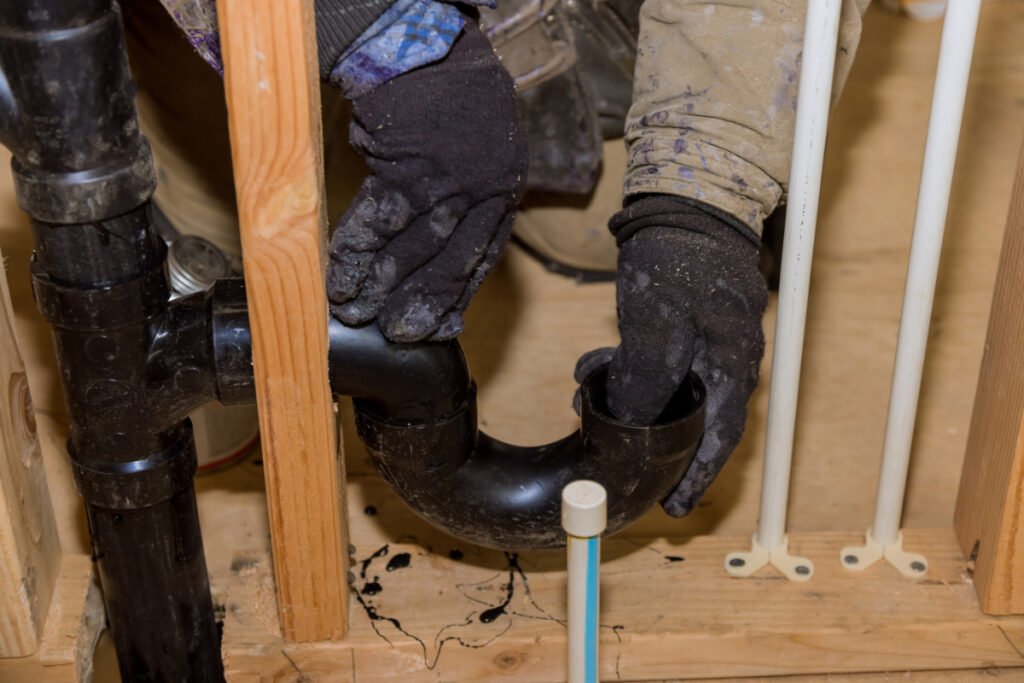
Adding a bathtub vent is easy. You just need to mark the correct spot above the trap weir, install a sanitary tee, and glue the vent pipe. Arm yourself with the right tools, pipes, and equipment and follow the instructions below.
Materials You’ll Need:
- PVC pipes, fittings, and sanitary tee
- PVC primer
- Cement
Tools You’ll Need:
- Hammer, Nuts, Bolts, and other Carpentry tools
- Power saw
- Drop Level and Level Checker
- Pipe Strap
- Fittings to attach to the existing drain pipe
Instructions:
Step 1. Pick the correct spot: Place the vent at the junction of the p trap and drain line and a distance of not more than 8 feet from the bathtub drain. And, if you have a crawlspace or basement bathroom, you’ll need to cut an additional pipe to extend the length of the vent.
Step 2. Install the vent pipe: Anchor the venting with the wall plates and double-check the positions and the slope. Once confirmed, prime the pipes and screw the fittings to the wall.
Step 3: Secure the connection: Secure the vent piping to the fitting with a pipe strap and glue a sanitary tee. Now, attach the waste pipe to the loose end of the sanitary tee and use additional brackets to maintain the slope correctly.
Use no-hub fittings to connect PVC vent pipes to older cast iron or galvanized iron waste pipes.
Types of Plumbing Vents for a Bathtub
- Dry Vent: A dry vent or vent stack regulates airflow within the bathroom plumbing, pulls sewer gases and exhaust away from the bathtub trap, and ensures a fresh air supply for proper ventilation.
- Auxiliary Vents: Auxiliary vents are subordinate vents that connect two or more bathroom fixtures, like the shower or toilet to the central bathtub vent. They are prevalent in vent upper-story or row-house bathtubs.
- Common Vent: A common vent connects two bathtubs on opposite sides of the same wall, as in flats, apartments, and row houses.
- Wet Venting: A wet vent is nothing but a drain line that carries water, solids, and gases at the same time and directly connects to the bathtub trap. You can use wet vents if your bathtub is very close to the exterior wall and there is no space for a horizontal tee.
- Loop Vent: Using a T joint, you can use a separate loop vent for your free-standing bathtubs and connect it to the central vent. In this case, each plumbing fixture gets a separate vent with its inlet through the attic or the roof stack.
Warning: Ensure that the diameter of the central vent is larger than the auxiliary or common vents, or water might return to the trap again.
Problems with a Plumbing Vent Pipe
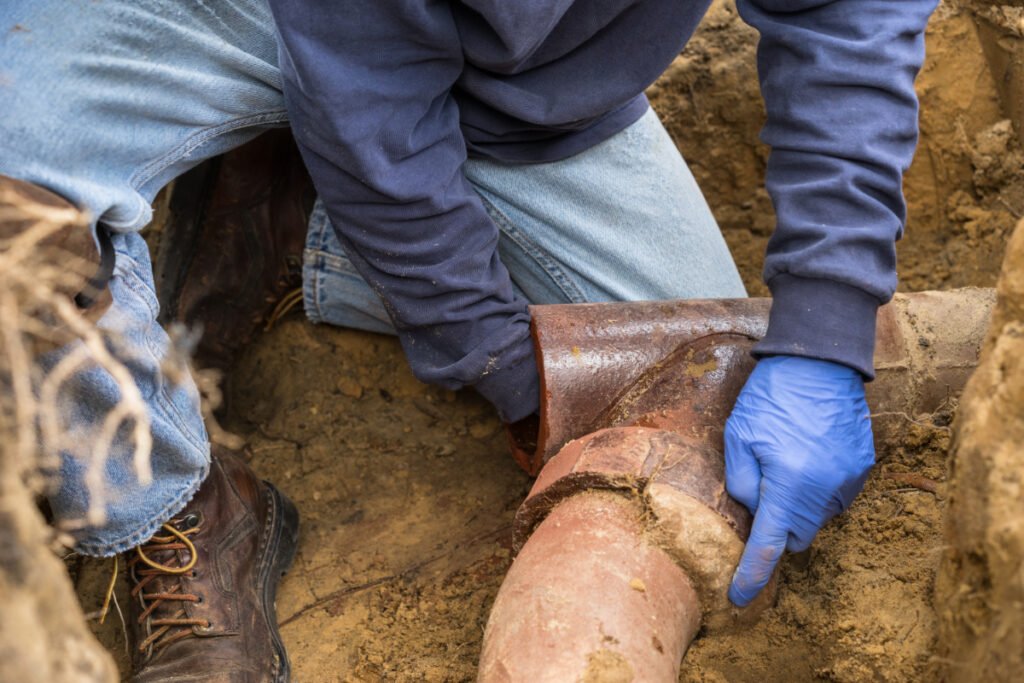
Every drain line is subjected to rust, corrosion, and clogging; even vent pipes face similar wrath. Being exposed to harmful gases, chemicals, and water, they wear out quickly and occasionally need cleaning and maintenance.
So, let us check out some of the problems with vent pipes and find an effective solution.
- Blocked Vent: Vent pipes can clog easily due to more extensive solid waste accumulations, waterlogging, or bathtub trap failures. In such a case, they do not eliminate the odors and sewer gas from the system, which leads to slow drainage.
- Corrosion: Older copper or cast iron vent pipes are prone to corrosion due to the continuous vapors and sewer gases passing through them and may require cleaning with a rust-removing solvent.
- Leakage: Leakage occurs when stormwater, rainwater, or trap seal water penetrates the vent pipe and breaches into the walls from its air holes. Eventually, these leaks may cause fungi or mold infections and need immediate repair by a plumber.
- Faulty Installation: Extremely short or wrongly sloped vents can leak sewer gases and foul smells into your plumbing system and must be rectified by adding additional supports and brackets that balance the slope.
Tips for Installing Bathtub Vents
- Never install your vents more than 8 feet from the trap, as this might lead to waterlogging and vent failure.
- Always check the local plumbing codes before installing the vents, as the slope, maximum length, and material differ from place to place.
- Conventional vents are about 1 ½ inches in diameter, but you can use a 2-inch wide PVC pipe as the central vent if you have more than three auxiliary or standard vents attached to it.
- The bathtub vent should be at least 6 inches above the trap weir to prevent clogging.
- If you have older pipes made of Copper, PVC, or Clay, call a professional plumber to install the vent and auger it.
Quick Hacks to Make Drain Cleaning Easier
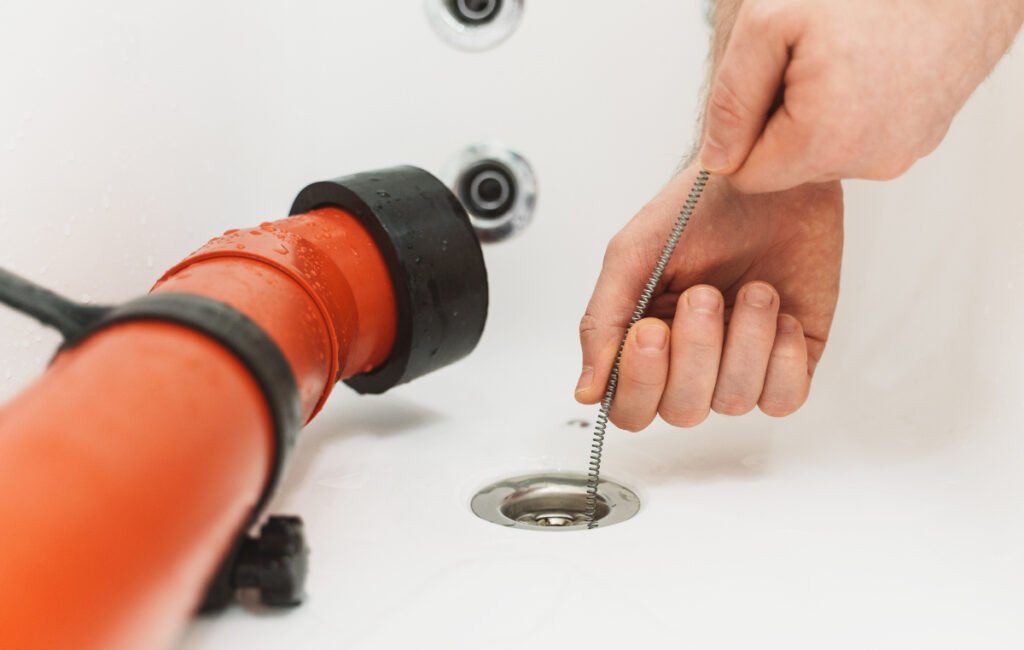
A clogged vent pipe is a tough row to hoe. Of course, You can wear your rubber gloves and clean out the vent using a plumber’s snake, but you risk damaging your pipes if you don’t do it correctly. Hence, we listed some quick hacks and solutions to unclog your drain instantly.
- Use a plunger: Create a vacuum near the bathtub drain with a plunger and force-push the solid waste accumulations down the pipe. You may also use duct or electrical tape to make the vacuum tighter.
- Pour Boiling Water: Boiling water may expand your pipes and dislodge the waste, making it flow through the drain easier. However, vapors might rise and re-enter your bathroom since the vent is already clogged. Hence, it’s advisable to switch on the bathroom fan.
- Use Baking soda & Vinegar: Carefully mix one part of baking soda with one part of white vinegar, pour it down your vent, and let it sit for around 10 minutes. However, since vinegar is an acidic material, it’s advisable to switch on the bathroom exhaust fan for adequate ventilation. Finally, flush cool water down the vent.
- Chemical Drain Cleaning Liquid: These contain materials like sulphuric acid and potassium hydroxide that loosen solid waste accumulations and effectively remove clogs.
Can You Use an Air Admittance Valve with a Bathtub?
Yes, you can use an air admittance valve if the bathtub is too close to the exterior walls or if there is no space to place a roof vent. An air admittance valve is a small device located just above the horizontal drain that works just as a dry vent, ensuring good drainage and preventing water gurgling.
Can You Use the Same Vent for Your Bathtub, Shower, and Toilet?
Yes, you can use the same vent for the bathtubs, shower, and toilet, but you’ll need to ensure that the pipe’s diameter is large enough to ventilate three fixtures together. Use 2-inch PVC pipes instead of iron ones that expand and frequently retract.
Should a Bathtub Vent Always Come from the Roof Stack?
No, a bathtub vent doesn’t need an inlet only from the roof stack, and you can run the vent through your walls, balconies, and decks, too. However, the general rule is that the inlet of the vent must be above the highest window of the house to draw cool air to the pipes.
Where Should You Locate the Bathtub Vent?
You can place the plumbing vent between the bathtub’s P trap and the main sewer line. A vent above the P trap will not eliminate the sewer gases from the system, while a vent more than 8 feet away from the trap will not enhance water drainage.
Bathtub vents are smart tools to ensure optimal drainage and a smell-free bathtub. They not only extend the lifespan of your tubs and the bathroom plumbing but maintain equilibrium and keep disease-causing bacteria and fungi at bay. Moreover, they save you from the extra expenses of cleaners and fresheners and maintain hygiene on a budget.
However, a blocked vent doesn’t trap sewer gas and might attract molds and mildew from the drain. Of course! You can call a professional plumber and disinfect it. You could also use some of the coolest bathtub cleaning hacks I’ve listed in my next blog!

